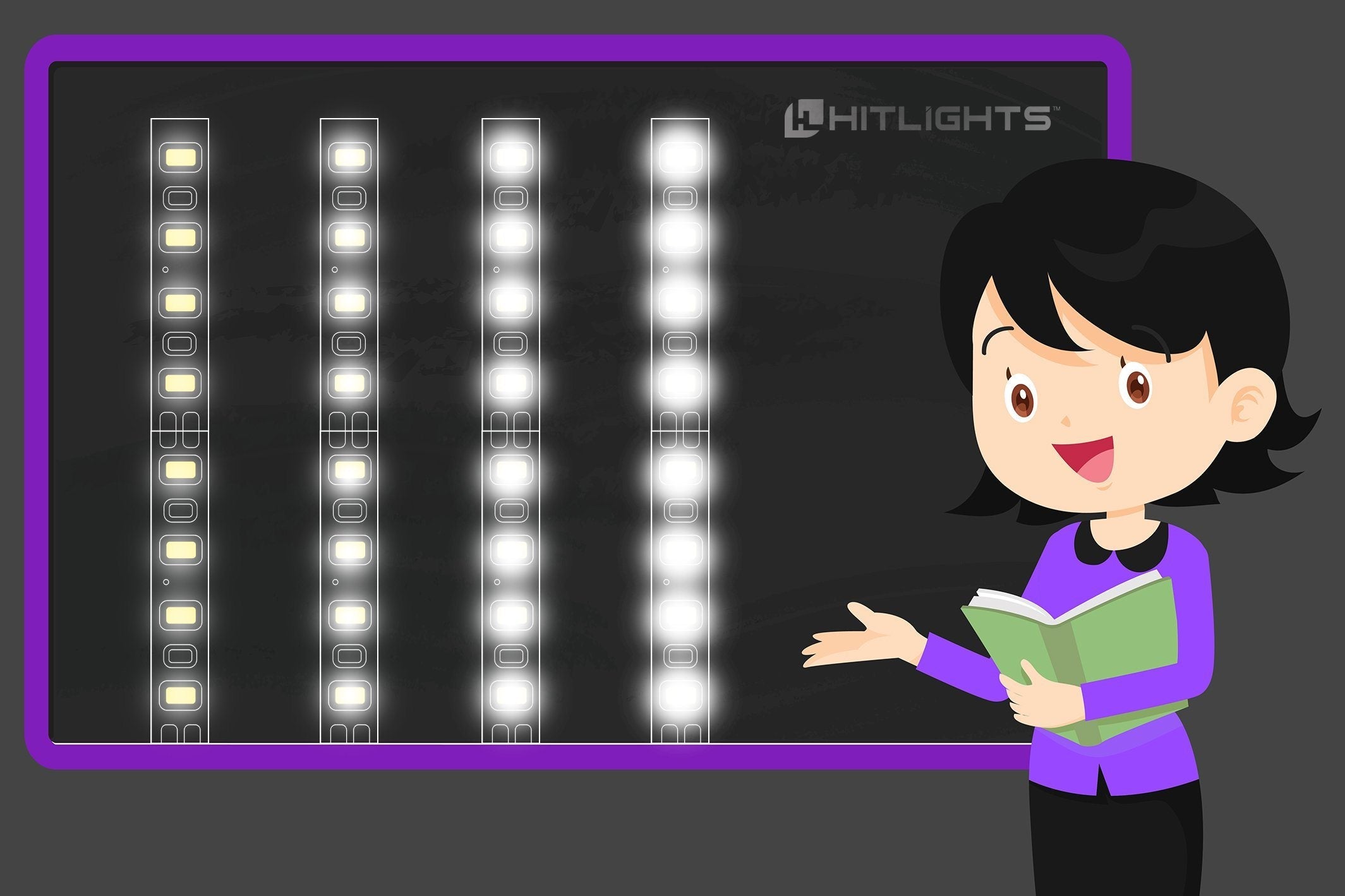- 1) Like for like replacement" href="#span-style-font-weight-400-1-like-for-like-replacement-span">1) Like for like replacement
- 2) Similar output replacement" href="#span-style-font-weight-400-2-similar-output-replacement-span">2) Similar output replacement
- 3) Estimate by area" href="#span-style-font-weight-400-3-estimate-by-area-span">3) Estimate by area
Lighting is a complicated and technical area - to get fully accurate answers to the questions ‘how much light do I need?’ requires some level of physics and engineering knowledge, as well as accurate measurements of the space and the surfaces being lit. In today’s blog article, we’ll offer a few suggestions on how you can easily spec the right amount of light for various different environments.
-
Light output is measured in lumens. We measure light output of our strips in lumens per foot, with values ranging from ~80 lumens per foot for our humble Luma5 Regular Density strip, to ~800 lumens per foot for out high output Luma20 High Density strip. To put the right amount of light in a space we need to estimate, as best we can, the right amount of lumens to put into that space to achieve the desired brightness level. Below, we’ll suggest a handful of different methods to determine this amount.
1) Like for like replacement
If you have an existing light source that you intend on replacing with LED, then simply matching the lumen output of that light source will usually do the trick.
As an example, we often speak with customers who are replacing under cabinet fluorescent task lighting with LED strips. These fixtures usually use a single T5 tube, which outputs around 1,200 lumens per foot. In this case, our Luma20 High Density strip (at 800 lumens per foot) is our recommendation.
This strip can be doubled up to achieve or exceed the 1,200 lumens per foot of the T5 tube, but we find that most customers end up being happy with just one run (at 800 lumens per foot) of that strip, as a significant portion of the T5’s 1,200 lumens are lost reflecting and bouncing around the inside of the fixture, which of course is not an issue with LED light strips.
2) Similar output replacement
Sometimes our customers are replacing existing light sources with LED strips, but the actual applications are very different. In this case, the same method used above is a good place to start for specing out that project.
As an example, a client might have a room currently illuminated with four 60 watt incandescent bulbs, which they intend to remove and to replace with an entirely different lighting method, say cove lighting. Like above, we’ll start by estimating the current lumen output. As 60 watt incandescent bulbs put out ~800 lumens a piece, we’re expecting to have around ~2,400 lumens currently available in that room.
Next, we’ll determine the size of the cove. Let’s say it’s 4 feet by 6 feet, so if we light up the entire cove, we have 20 feet of strip to use. Our initial calculation, then, is that we’ll need a 120 lumen per foot strip.
Because this is not a like for like application, this is where it’s getting a little complicated. Cove lighting is indirect lighting, meaning that the output of the LED strips is reflecting off the ceiling before it effectively illuminates the room. Depending on the finish, colour, and texture of the ceiling, some amount of this light will be lost. In this situation, we’d be wise to suggest more than 100 lumens per foot of strip - in some cases, like a heavily stained wood ceiling, we might suggest much more!
How much more? Without being able to model or render this room in some high end lighting software, there’s no way to tell for sure. Our rule of thumb for indirect lighting is to spec 50% to 100% more light than what was available directly. In this case, either our Luma5 High Density strip (164 lumens per foot) would both be good recommendations.
3) Estimate by area
In the absence of an existing light source, we need to estimate the amount of light that we need. For this, we at HitLights use the below table, which recommends appropriate amounts of lumens per square foot of floor space.
|
Environment |
Lumens per square foot |
|
Living |
15 |
|
Low Office |
25 |
|
High Office |
50 |
|
Retail |
75 |
|
Detail |
100 |
These definitions are both broad and vague, but they offer pretty good starting points for your calculations.
As an example, let’s consider a medium sized, multi-person office of around 500 square feet. Let’s say we want it to be relatively bright, and we’re aiming for 50 lumens per square foot. Our initial calculation, then, is to require about 25,000 lumens for the entire office.
Several considerations must be taken into account before using this number. These calculations are for ‘average’ spaces. If you have dark walls, if you have obstacles such as cubicles, if you’re using indirect lighting, if your ceilings are very high - all of these factors, and more, will decrease the amount of effective light. Here’s where these estimates become just that - estimates. Certainly, depending on the specific environment, the above example could require as much as 100,000 lumens or more. The true value required will only be determined by consultation with a lighting expert, good judgement, or both.
Larger spaces such as this will rarely be lit by one time of fixture, so perhaps your final spec will include 90 feet of Luma5 High Density strip as indirect cove lighting (~15,000 lumens direct output) to start with, and then several high output bulbs above cubicles or common spaces. LED strip lighting is rarely the sole source of lighting for a complete project!
Hopefully this has answered your LED lighting questions! If not, get in touch with our expert customer service team at customerservice@hitlights.com or 1 (855) 768-4135


